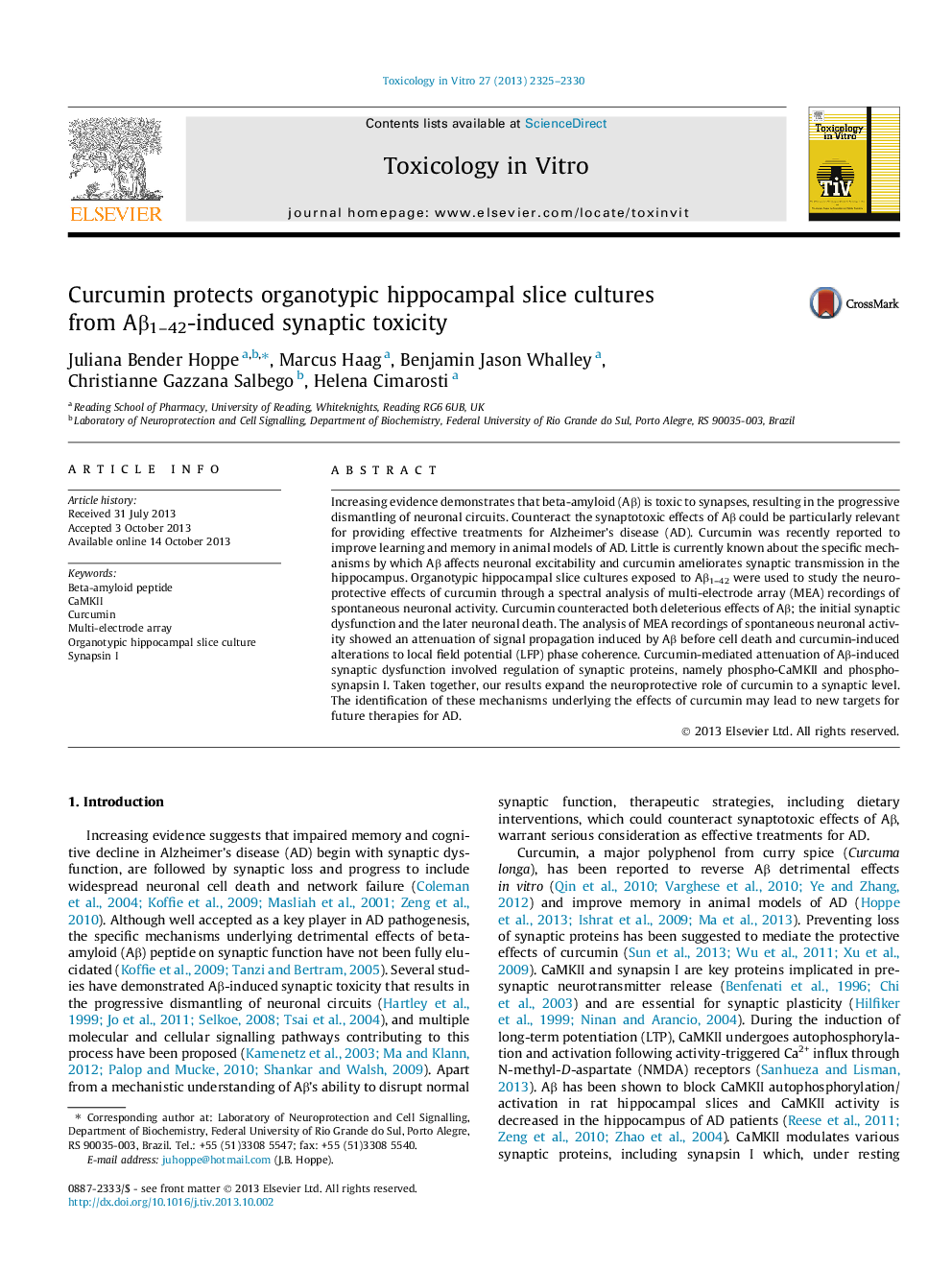| کد مقاله | کد نشریه | سال انتشار | مقاله انگلیسی | نسخه تمام متن |
|---|---|---|---|---|
| 2602526 | 1133776 | 2013 | 6 صفحه PDF | دانلود رایگان |

• The protective role of curcumin goes beyond its capacity to modulate neuronal death.
• MEA recordings of spontaneous neuronal activity showed an attenuation of signal propagation induced by Aβ.
• Curcumin modulates Aβ-induced decrease in synaptic function via a CaMKII-dependent pathway.
Increasing evidence demonstrates that beta-amyloid (Aβ) is toxic to synapses, resulting in the progressive dismantling of neuronal circuits. Counteract the synaptotoxic effects of Aβ could be particularly relevant for providing effective treatments for Alzheimer’s disease (AD). Curcumin was recently reported to improve learning and memory in animal models of AD. Little is currently known about the specific mechanisms by which Aβ affects neuronal excitability and curcumin ameliorates synaptic transmission in the hippocampus. Organotypic hippocampal slice cultures exposed to Aβ1–42 were used to study the neuroprotective effects of curcumin through a spectral analysis of multi-electrode array (MEA) recordings of spontaneous neuronal activity. Curcumin counteracted both deleterious effects of Aβ; the initial synaptic dysfunction and the later neuronal death. The analysis of MEA recordings of spontaneous neuronal activity showed an attenuation of signal propagation induced by Aβ before cell death and curcumin-induced alterations to local field potential (LFP) phase coherence. Curcumin-mediated attenuation of Aβ-induced synaptic dysfunction involved regulation of synaptic proteins, namely phospho-CaMKII and phospho-synapsin I. Taken together, our results expand the neuroprotective role of curcumin to a synaptic level. The identification of these mechanisms underlying the effects of curcumin may lead to new targets for future therapies for AD.
Journal: Toxicology in Vitro - Volume 27, Issue 8, December 2013, Pages 2325–2330